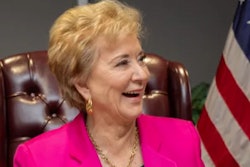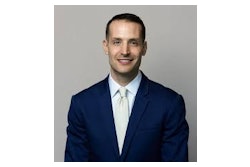Southern Illinois University Carbondale fares well on its hiring of minority administrators, but it is being taken to task for the lack of women in its executive ranks.
Women are absent from the top ranks at Southern Illinois University Carbondale, a stark contrast to the increase in gender parity at other schools.
SIUC’s chancellor, vice chancellors, provost and all 10 academic deans are men. Nationally, women made up at least a third of the vice presidents and provosts surveyed and 36 percent of deans, according to a report published in February by the American Council on Education and the College and University Professional Association for Human Resources (CUPA-HR). SIUC Interim Provost Don Rice says that the lack of women administrators at the 21,000-student campus has been a “historical problem.”
“The search committees haven’t been as active as they should be,” Rice says. “We’ve had a sense that what a search committee does is that you write your ad and put it in the newspaper … but you don’t really get out and recruit in the applicant pool.”
Rice says that since last fall, he has been personally meeting with every search committee formed for an open job and directing them to widen the applicant pool. The result: Women make up half of short-listed candidates for the positions of dean of mass communications and a newly created job of director of the revamped honors program.
Rice says he had been shocked in the previous year when the short list of candidates for the dean of education did not include any women. Nationally, education departments are dominated by women.
“If you can’t find a female administrator in education, you can’t find a female administrator anywhere,” Rice says. “I expected better results.”
SIU’s President Glenn Poshard, in office since 2006, has been holding town hall meetings at Southern Illinois University’s Carbondale and the smaller Edwardsville campuses. In a statement, he says that he was aware of the underrepresentation of women in key leadership positions and believes in the value of increasing diversity.
But Laraine Wright, who retired from the Carbondale campus after an 18-year career, asked why there hasn’t been progress sooner. Wright, a former publications director in the university relations office, brought up her concerns at a board of trustees meeting in February.
She says she was surprised when she received a university mailing and discovered that all the people at the top tier were men.
“It’s just an exclusive male club that built up over the years and no one was paying any attention,” she says. “It says that women are not important and don’t count for anything.”
The highest ranking woman in SIUC’s history was Dr. Jo Ann E. Argersinger, who became chancellor in 1998. She was fired a year later by the board of trustees after the university president complained about her management style and accused her of sowing dissension between employees and the administration. Hundreds of faculty members staged a rally to protest Argersinger’s ouster.
On the Edwardsville campus, which has 14,000 students, women are represented in the top ranks. Of the eight deans, three are women.
Dr. Jacqueline E. King, co-author of ACE’s national study on women and minorities in senior leadership, says there is a strong pool of female candidates available to universities. She called the lack of women in SIUC leadership “atypical.”
“The percentage of women earning Ph.D.s has been on the rise,” she says. “You’ve seen women making strides through the academy and this has worked its way up.” In terms of being racially diverse, SIUC also stands out — but in a positive way. The chancellor of Carbondale, Dr. Fernando M. Treviño, is Hispanic. SIUC’s vice chancellor and law school dean are Black; the engineering college’s dean is Asian. Edwardsville has a vice chancellor and a dean who are Asian.
Nationally, there are fewer people of color in senior leadership posts. Universities report that it is harder for them to find racially diverse candidates than to find White women candidates.
At Southern Illinois, “something’s working,” says Andy Brantley, chief executive officer of CUPA-HR.
Rice says he did not know why the university system seemed to be more successful at hiring minority men than women. Statistics from the university system’s annual report on women and minorities showed that since 2002, the number of minorities and women in the faculty had risen.
So have the numbers of minority and female students. In the fall of 2006, minorities made up 18.5 percent of the student body and women were 52 percent.
The only number to have dropped in the past four years was the number of women in executive and managerial jobs.
Rice says he expects improvement over the next few years in the top ranks because the university has increased the diversity of its faculty. Administrative jobs often become filled by faculty members. Rice says that in the past, SIUC has tended to look outside when there have been senior job openings. Now, the university will give more attention to hiring — and grooming — from within. He says officials are also doing more to identify talented faculty members and train them for leadership posts.
“I think things are changing here, internally,” Rice says.
Click here to post and read comments
© Copyright 2005 by DiverseEducation.com


















